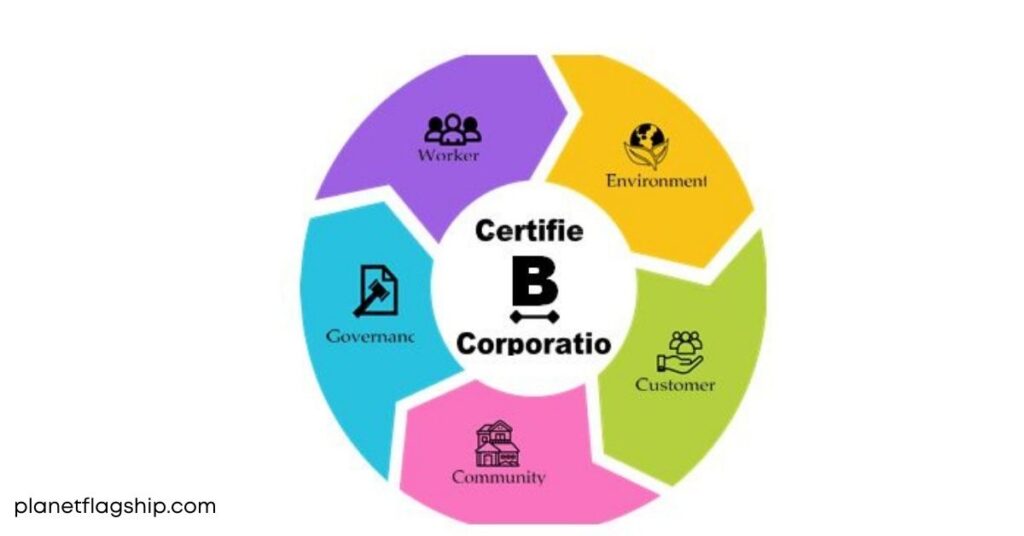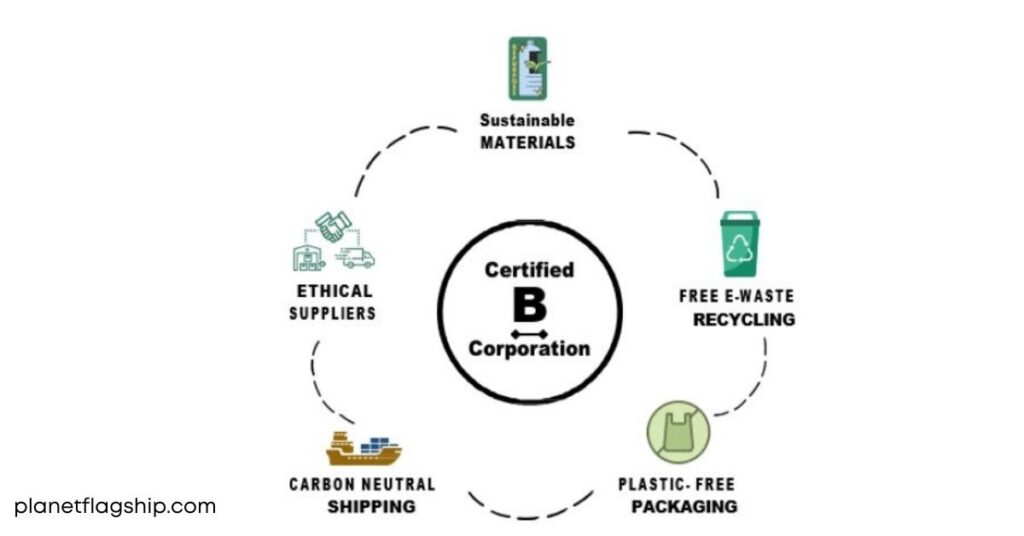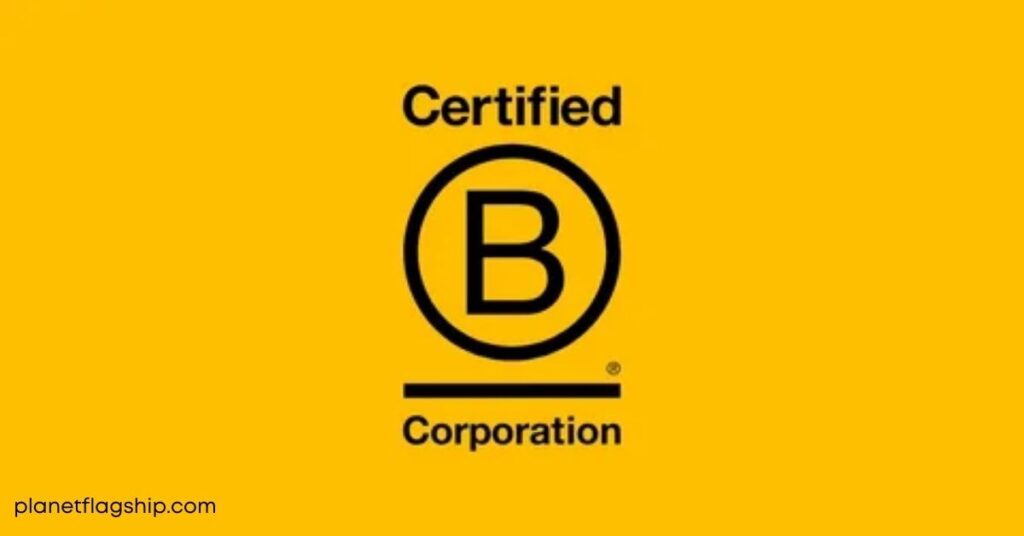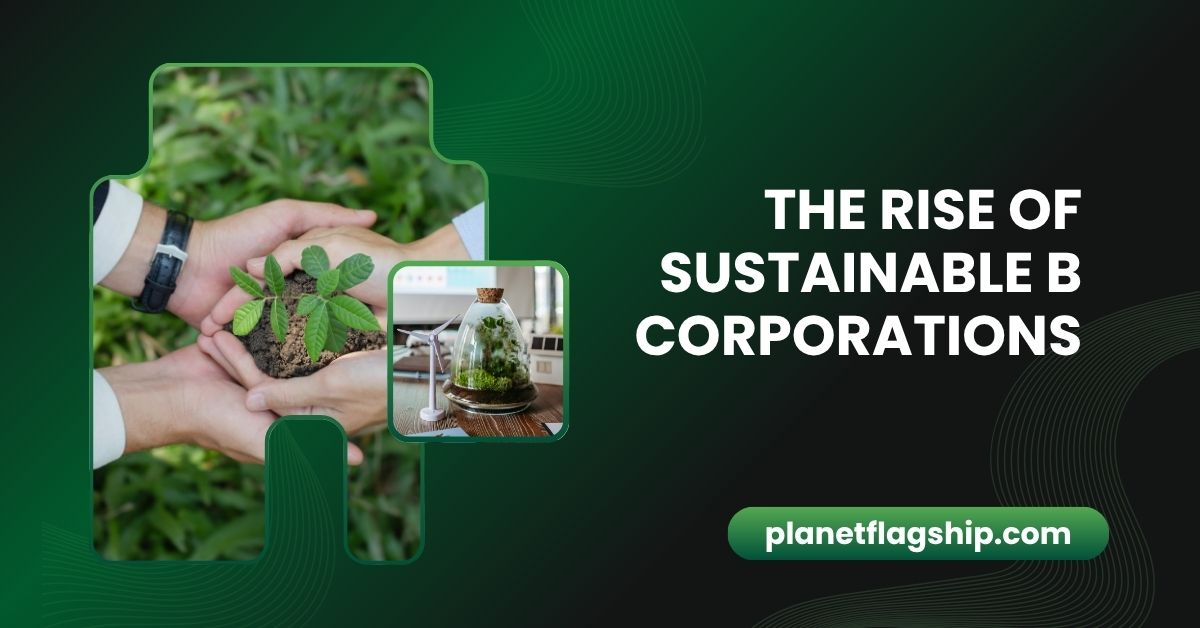INTRODUCTION
American companies in the 1970s primarily focused on generating profits for their shareholders. Nowadays, their focus has shifted, and they are starting to help their employees, support their local communities, and protect the environment. A new way of thinking, known as the triple bottom line, is introduced, in which companies consider their success not only in terms of profit but also in terms of the impact of their operations on the planet and people. The primary outcome of this shift is the emergence of Certified B Corporations, which are companies approved by the B Lab, a group dedicated to promoting social and environmental responsibility.
B Corps, or B Corporations, are important because they emphasize the focus of companies, which is that their main purpose is not only to make money but also to provide better sustainability to the world. B Corps primarily supports local communities, treats their workers with sincerity, and focuses on generating positive social impacts. The purpose of this company is to reduce pollution, save energy, and protect the environment when resources are used. An independent group, such as customers or employees, approves B Corps. In other words, they create a sustainable, fair, and responsible economy.
In this article, we focus primarily on how we make B Corps distinct, the importance of B Corporations, and how we build trust with investors, employees, and customers. Additionally, we explore how B Corps supports local communities. B Corps, such as Allbirds, provide examples of the importance of B Corps. This article explains the challenges that B Corps faces, including the time and effort required.
Certified benefit corporations, also known as benefit corporations, are companies that prioritize the well-being of the environment and society over profit. Due to their potential for sustainable development and their contribution to corporate social responsibility, researchers are paying great attention to them. These companies are certified by B Lab, a nonprofit organization, and the purpose of their certification is to meet high standards of accountability and sustainability.

In 2007, the first B Corporations were certified, and their numbers grew rapidly thereafter. Today, there are almost 1,700 B Corps in 50 countries. For B Corp companies, size is irrelevant; it may be small or large, but now most B Corp are medium- or small-sized businesses that are privately owned. If a company is a B Corp, it means its aim is not only to generate profits for its owners; its purpose is also to provide care to stakeholders, including customers, employees, and the community.
B CORPS AND SUSTAINABLE ENTREPRENEURSHIP
It means using the business to help solve environmental and social problems while also generating a profit. For this purpose, a new type of business has emerged, known as a B Corp. In this business, we aim to make the world better by utilizing normal business tools, such as services and selling products.
The researchers interviewed fourteen B Corps, and it was found that the B Corp model provides a way to create change. B Corps provides companies with a shared identity, but the primary focus of B Corps is to create a positive impact on society while generating revenue as soon as possible.
ALSO READ: Human Cost of Climate Change: how it’s displacing millions of people?
B CORPS AS A SUSTAINABLE BUSINESS MODEL
In Australia, exploratory study of B Corps

Although many businesses demonstrate that they care for the environment and community, or in other words, prioritize sustainability, a new kind of business is emerging that aims to protect sustainability, not just make a profit. In an exploratory study of Australia, 14 companies certified as B Corps that meet the standards for environmental and social impacts were identified. The mission of these companies was to promote sustainability for the planet and its people while also generating a profit through financial gain.
Regarding sustainable business models, although many studies are lacking, the number of these types of models is still increasing. Some researchers are attempting to explain the concept of a sustainable business model. According to this model, doing business for profit also involves protecting society and the environment. These businesses adhere to the triple bottom line, which prioritizes the planet, people, and profit.
Sustainable Entrepreneurship
It is the process by which entrepreneurs transition from an idea to a fully operational business, with the goal of sustainability and a positive impact on society. In this type of entrepreneurship, the starting point is not just money; entrepreneurs have a desire to help others. This process begins when entrepreneurs identify environmental or social problems and perceive an opportunity to address them. Their solution is usually based on a triple bottom line.
Some entrepreneurs observe that gaps are being created in the market due to environmental problems, and they attempt to fill those gaps. In other words, sustainable entrepreneurs can make their business both profitable and sustainable.
Variety of Sustainable Business Model
- Successful sustainable business model
In this business, model success is not only about making money; it is also about maintaining the triple bottom line. This business model succeeds through strong partnerships, customer loyalty, innovation, and a clear mission. In this business model, success is measured by both social and environmental impacts, as well as financial performance. We grow this type of business model by forming partnerships with larger companies, leveraging technology, and expanding into new markets.
➢ Challenges of sustainable business models
Difficulties faced by sustainable business models when creating value. The challenge is to satisfy each of the different stakeholders involved. Because investors care about money, the community cares about jobs and safety. On the other hand, the government cares about regulations, laws, etc., while customers care about eco-friendly products.
➢ Variety of sustainable business models
In this process, it is a matter of where this sustainable model originates, which type of organization utilizes it, and how it functions. In which laws and legal structures matter. Sometimes, companies are designed to make quick profits.
CHARACTERISTICS AND B CORP CERTIFICATION
Hybrid organizations are a unique type of business, and they strive to adhere to the triple bottom line. They not only focus on financial gain but also contribute to society through donations, striving to balance these two goals. The plans of these businesses are based on combating climatic issues. Sometimes, it is not easy to maintain the positive impacts of business on society while also generating profits. Due to these difficulties, countries created new structures and types of legal businesses. In Belgium, the UK, and the US, numerous companies operate as social purpose companies, community interest companies, and flexible purpose corporations.
The hybrid organization worked more smoothly due to its new legal forms and its dual goals: financial success and social benefits. We specialize in hybrid organizations, and for this, we focused on relating this to B Corp.
B Corps, basically, are businesses that make legal and clear promises to take care of the triple bottom line. Sometimes, companies use their mission statements or certifications to demonstrate their purpose, but these certifications are not strong enough when the company faces tough times; that’s why a B Corp is necessary. A company must pass the strict certification to become a B Corp, which the B Lab creates. This organization is a nonprofit entity based in the United States.
CHALLENGES AND IMPACTS OF B CORP CERTIFICATION

The big advantage of B Corp certification is that the company is clearly committed to following a triple bottom line. In 1975, Parkinson’s products, which have certification or a trusted seal, are likely to be chosen by customers. Researchers like Cording and Schuler agree that when people see a trusted third party, they believe companies have a social responsibility, which in turn improves both financial and social performance.
➢ PBCs
In this corporation, significant investment is required, even though people think they face challenges in generating revenue when they focus on social impacts. Many PBCs are funded by capital firms that are focused on making profits. Many PBCs sell directly to the people. Because customers believe the company cares about them, sales increase. Most investors believe that PBCs adhere to the triple bottom line.
➢ Allbird
This company manufactures eco-friendly shoes from recycled and wool materials. Allbirds is essentially a B Corp. The CEO of this model stated that they selected this product because it is eco-friendly and follows a triple bottom line.
Frequently Asked Questions
What is a B Corporation and how is it different from a regular company?
A B Corporation is a business certified to meet high standards of social and environmental performance. Unlike regular companies, B Corps focus on people, planet, and profit the triple bottom line.
Why are more companies choosing to become B Corps?
Companies want to build trust with customers, employees, and investors by proving they care about sustainability and ethics, not just profit. B Corp certification helps them stand out and stay accountable.
How do B Corps benefit local communities?
B Corps often hire locally, use eco-friendly materials, and reinvest in their communities. Their goal is to uplift people and the environment while still running a successful business.
Is it hard for a business to become a B Corp?
Yes, B Corp certification involves meeting strict standards, going through audits, and staying transparent. But the effort builds long-term credibility and customer loyalty.
Can B Corps still make a profit while being sustainable?
Absolutely. Many B Corps, like Allbirds, show that doing good for the planet can lead to business success. Sustainability and profitability can go hand-in-hand with the right strategy.
CONCLUSION
B Corps is changing the way business is done, ensuring that businesses can follow the triple bottom line. In other words, it is possible to protect the planet and society while also profiting through B Corps. Companies with B Corp certification make money, protect the planet, and have a positive impact on society. Shareholders’ primary interest is in generating profits, but companies like B Corps also ensure that they satisfy their stakeholders. Different researchers have observed that businesses that follow the triple bottom line, as certified by B Corps, also exhibit accountability and transparency. B Corps is certified by the B Lab, a nonprofit organization.
B Corp businesses faced challenges, but they focused on balancing stakeholder interests while also considering the interests of shareholders. B Corps builds strong trust and loyalty among customers because they follow the triple bottom line.PBCs also support sustainable business models that are growing and have the necessary legal frameworks in place. Large-scale companies like Allbirds create eco-friendly products with a great social mission, which is a primary reason for their business success. In short, B Corps demonstrates that companies prioritize a triple-bottom-line approach, focusing on more than just financial gain.
REFERENCES
Kirst, R. W., Borchardt, M., de Carvalho, M. N. M., & Pereira, G. M. (2021). Best of the world or better for the world? A systematic literature review on benefit corporations and certified B corporations contribution to sustainable development. Corporate Social Responsibility and Environmental Management, 28(6), 1822-1839.
Kim, S., Karlesky, M. J., Myers, C. G., & Schifeling, T. (2016). Why companies are becoming B corporations. Harvard Business Review, 17, 1-5.
Stubbs, W. (2017). Sustainable entrepreneurship and B corps. Business Strategy and the Environment, 26(3), 331-344.
Stubbs, W. (2017). Characterising B Corps as a sustainable business model: An exploratory study of B Corps in Australia. Journal of Cleaner Production, 144, 299-312.
Farny, S., & Binder, J. (2021). Sustainable entrepreneurship. World encyclopedia of entrepreneurship, 605-611.
Dentchev, N., Baumgartner, R., Dieleman, H., Jóhannsdóttir, L., Jonker, J., Nyberg, T., … & van Hoof,
B. (2016). Embracing the variety of sustainable business models: social entrepreneurship, corporate intrapreneurship, creativity, innovation, and other approaches to sustainability challenges. Journal of cleaner Production, 113, 1-4.
Villela, M., Bulgacov, S., & Morgan, G. (2021). B Corp certification and its impact on organizations over time. Journal of Business Ethics, 170, 343-357.
Richardson, A., & O’Higgins, E. (2019). B corporation certification advantages? Impacts on performance and development. Business & Professional Ethics Journal, 195-221.
Dorff, M. B., Hicks, J., & Solomon, S. D. (2021). The future or fancy? An empirical study of public benefit corporations. Harv. Bus. L. Rev., 11, 113.

John is a professional blogger and passionate advocate for environmental sustainability. With years of experience exploring eco-friendly practices and green innovations, he shares insightful articles on Planet Flagship to inspire a sustainable future. John’s expertise lies in making complex environmental topics accessible and actionable, empowering readers to make meaningful changes for the planet.
